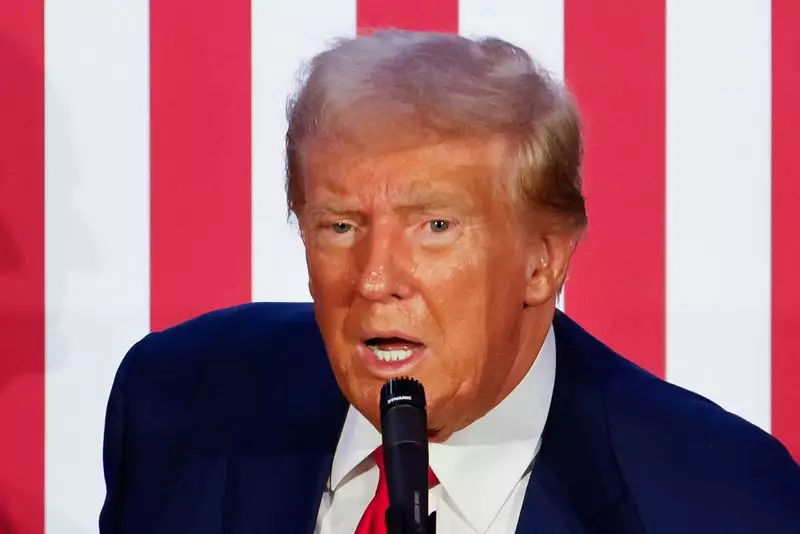The political landscape in the United States is often marked by debates over economic policy, especially regarding trade and tariffs. Former President Donald Trump has re-emerged as a leading Republican presidential candidate, proposing a series of ambitious tariff initiatives intended to protect American workers and reshape international trade dynamics. In light of his proposals and their potential implications for the S&P 500 and the broader economy, it is crucial to assess these moves critically.
Trump’s tariff strategy outlines the imposition of substantial levies on imports, envisioning tariffs between 10% and 20% on a broad array of foreign goods, and a staggering 60% on products originating from China. These measures are presented as solutions to perceived injustices in trade, specifically targeting nations with which the U.S. runs significant trade deficits. Trump’s rhetoric underscores a populist appeal, positioning the tariffs as necessary interventions to safeguard American jobs against unfair foreign competition.
However, this approach raises immediate concerns among economists and analysts. While it is undeniable that tariffs may provide temporary relief for certain sectors, a deeper investigation reveals the risks associated with escalating trade tensions and the broader economic fallout that could follow from such policies.
Analysts at Barclays have carefully evaluated the possible repercussions stemming from Trump’s tariff proposals and projected a 3.2% contraction in earnings for companies listed on the S&P 500 in the following year. This decline is compounded by the anticipated retaliatory measures from other nations, which could further cut earnings by an additional 1.5%. Such forecasts indicate a potential economic downturn that would reverberate through various sectors of the economy.
The analysis suggests that industries reliant on global supply chains—such as materials, discretionary consumer goods, industrials, technology, and healthcare—are particularly vulnerable. This is due to their reliance on imported components and goods, which could see price hikes due to tariffs. Consequently, the increased operational costs could lead to reduced profitability, stalling investment and hiring, and ultimately hindering economic growth.
Beyond the implications for corporate earnings, the proposed tariffs threaten to precipitate significant inflationary pressures within the economy. Higher prices for imported goods could disrupt consumer spending patterns and lead to short-term spikes in inflation rates. This scenario could become increasingly problematic as the Federal Reserve navigates such turbulence. Analysts have suggested that, in response to rising inflation, the Fed may maintain elevated interest rates despite a potential economic slowdown.
The interplay between tariffs, supply constraints, and inflation signifies a complicated relationship that could impose long-term challenges on economic stability and growth. The Fed’s ability to manage such conditions while balancing concerns over inflation and economic contraction will be put to the test, potentially leading to aggressive policy shifts.
The political ramifications of Trump’s proposals cannot be overstated. Current polling data indicates a tightly contested electoral race against his likely Democratic opponent, Kamala Harris. Given the polarized environment and the divided Congress anticipated following the election, either candidate would face hurdles in enacting their proposed economic policies, including tariffs.
Trump’s indications that he might resort to executive orders to implement his tariff plans underscore the urgency of his agenda but also highlight potential governance challenges in a fragmented political climate. Historical precedents suggest that such unilateral actions can lead to significant public and political backlash, complicating the implementation of broader economic strategies.
While Donald Trump’s tariff proposals aim to bolster American economic interests and safeguard jobs, a thorough assessment reveals numerous risks associated with these initiatives. The projected declines in S&P 500 earnings, potential inflationary pressures, and political hurdles collectively present a challenging landscape for an economic revival rooted in tariff implementation. As policymakers navigate this complex terrain, the efficacy of aggressive trade strategies remains uncertain, necessitating a balanced approach that considers both protectionism and global interdependence. The implications of these policies will resonate beyond the ballot box, shaping the economic landscape for years to come.

